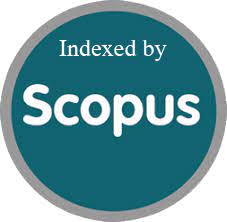Efficacy Of Immunomodulatory Therapies In Neonatal Pemphigus A Randomized Controlled Trial
DOI:
https://doi.org/10.63682/jns.v14i15S.3617Keywords:
Neonatal pemphigus, Immunomodulatory therapy, Intravenous immunoglobulin (IVIG), Autoimmune blistering disease, Randomized controlled trial (RCT)Abstract
Background: Neonatal pemphigus appears as a very uncommon autoimmune blistering condition which develops because maternal autoantibodies against desmosomal proteins pass through the placenta to the baby. The current available therapies do not provide satisfactory outcomes so medical scientists explore immunomodulatory treatments as safer and possibly better therapeutic options. Aim: The objective of this randomized controlled trial evaluated how well and safely immunomodulatory treatments worked for treating neonatal pemphigus.
Materials and Methods: This clinical trial included 60 pemphigus-diagnosed newborns who were distributed randomly into two groups where the first group (n = 30) received IVIG and corticosteroids under immunomodulatory therapy and the second group (n = 30) received standard palliative care treatment.
Results and discussion: The main evaluation target was blister duration but the study additionally analyzed judgments of disease seriousness alongside recurrence frequency and side effect occurrence. Eligible subjects in the immunomodulatory therapy group achieved blister cure more quickly (7.2 ± 1.8 days) than patients in the control group (12.5 ± 2.6 days, p < 0.001). Analysis revealed that the disease severity score reached 2.3 ± 0.8 points during week 2 in the immunotherapy group compared to 4.7 ± 1.2 points in the control group (p < 0.01). The recurrence rate between groups proved significant when compared with 10% versus 33% (p = 0.02). Complications between both patient groups proved comparable because no severe side effects occurred.
Conclusion: Immunomodulatory therapy, particularly IVIG combined with corticosteroids, significantly improves clinical outcomes in neonatal pemphigus by accelerating blister healing and reducing disease severity without increasing adverse effects. These findings suggest that immunomodulatory therapy could be considered as a first-line treatment for neonatal pemphigus. Further long-term studies are required to confirm its sustained benefits and safety profile.
Downloads
Metrics
References
Rauova L, Rovensky J, Shoenfeld Y. Immunomodulation of autoimmune diseases by high-dose intravenous immunoglobulins. Springer Semin Immunopathol. 2001;23(4):447-57. doi:10.1007/s281-001-8170-y.
Sherer Y, Levy Y, Shoenfeld Y. Intravenous immunoglobulin (IVIg) in autoimmune diseases - expanding indications and increasing specificity. In: Heidt PJ, Rusch VD, Van Der Waaij D, Litterae H, editors. Old Herborn University Seminar Monograph. 2001;13:85-91.
Shalem D, Shemer A, Shovman O, et al. The efficacy of intravenous immunoglobulin in Guillain-Barré syndrome: the experience of a tertiary medical center. Isr Med Assoc J. 2018;20(12):754-60. PMID: 30550005.
Watad A, Amital H, Shoenfeld Y. Intravenous immunoglobulin: a biological corticosteroid-sparing agent in some autoimmune conditions. Lupus. 2017;26(10):1015-22. doi:10.1177/0961203317696589.
Dalakas MC. Update on intravenous immunoglobulin in neurology: modulating neuro-autoimmunity, evolving factors on efficacy and dosing and challenges on stopping chronic IVIg therapy. Neurotherapeutics. 2021;18:2397-418. doi:10.1007/s13311-021-01108-4.
Zuercher AW, Spirig R, Baz Morelli A, et al. Next-generation Fc receptor-targeting biologics for autoimmune diseases. Autoimmun Rev. 2019;18(10):102366. doi:10.1016/j.autrev.2019.102366.
Bayry J, Misra N, Latry V, et al. Mechanisms of action of intravenous immunoglobulin in autoimmune and inflammatory diseases. Transfus Clin Biol. 2003;10(3):165-9. doi:10.1016/s1246-7820(03)00035-1.
Galeotti C, Kaveri SV, Bayry J. IVIG-mediated effector functions in autoimmune and inflammatory diseases. Int Immunol. 2017;29(11):491-8. doi:10.1093/intimm/dxx039.
Figgins BS, Aitken SL, Whited LK. Optimization of intravenous immune globulin use at a comprehensive cancer center. Am J Health-Syst Pharm. 2019;76:S102-S106. doi:10.1093/ajhp/zxz233.
Chapman J, Shoenfeld Y. Chronic inflammatory demyelinating polyradiculoneuropathy: revisiting the role of intravenous immunoglobulins. Isr Med Assoc J. 2013;15(6):293-4.
Shoenfeld Y, Katz U. IVIg therapy in autoimmunity and related disorders: our experience with a large cohort of patients. Autoimmunity. 2005;38(2):123-37. doi:10.1080/08916930500059633.
Allen JA, Gelinas DF, Freimer M, et al. Immunoglobulin administration for the treatment of CIDP: IVIG or SCIG? J Neurol Sci. 2020;408:116497. doi:10.1016/j.jns.2019.116497.
Levy Y, Uziel Y, Zandman G, et al. Response of vasculitic peripheral neuropathy to intravenous immunoglobulin. Ann N Y Acad Sci. 2005;1051:779-86. doi:10.1196/annals.1361.121.
Blank M, Bashi T, Shoenfeld Y. Idiotype-specific intravenous immunoglobulin (IVIG) for therapy of autoimmune diseases. In: Methods Mol Biol. 2014;1060:353-61. doi:10.1007/978-1-62703-586-6_18.
Gelfand EW. Intravenous immune globulin in autoimmune and inflammatory diseases. N Engl J Med. 2012;367(21):2015-25. doi:10.1056/NEJMra1009433.
Sapir T, Shoenfeld Y. Facing the enigma of immunomodulatory effects of intravenous immunoglobulin. Clin Rev Allergy Immunol. 2005;29(3):185-99. doi:10.1385/CRIAI:29:3:185.
Shoenfeld Y, Gershwin ME. Intravenous immunoglobulin. Clin Rev Allergy Immunol. 2005;29:165-6. doi:10.1385/CRIAI:29:3:165.
Zandman-Goddard G, Shoenfeld Y. Intravenous immunoglobulin-customized therapy. In: Anaya JM, Shoenfeld Y, Rojas-Villarraga A, et al., editors. Autoimmunity: From Bench to Bedside. Bogota (Colombia): El Rosario University Press; 2013. Chapter 41.
Maddur MS, Hegde P, Sharma M, et al. B cells are resistant to immunomodulation by ‘IVIg-educated’ dendritic cells. Autoimmun Rev. 2011;11:154-6. doi:10.1016/j.autrev.2011.08.004.
Downloads
Published
How to Cite
Issue
Section
License

This work is licensed under a Creative Commons Attribution 4.0 International License.
You are free to:
- Share — copy and redistribute the material in any medium or format
- Adapt — remix, transform, and build upon the material for any purpose, even commercially.
Terms:
- Attribution — You must give appropriate credit, provide a link to the license, and indicate if changes were made. You may do so in any reasonable manner, but not in any way that suggests the licensor endorses you or your use.
- No additional restrictions — You may not apply legal terms or technological measures that legally restrict others from doing anything the license permits.










